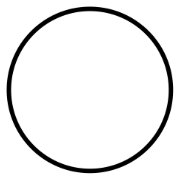Search the Community
Showing results for tags 'two pianos'.
-
Why not? I wanted to try to do it for two pianos. In Field style, which is much more "restrained" than Chopin.
-
Hi everybody. Back to tonality for a while. Nocturno para dos pianos.mp3
-
https://www.youtube.com/watch?v=_XA6S1U5Wtc Hi! I'm Eunjae Oh, visiting this site for the first time. I am 19 years old and currently studying composition in university. To explain a little bit about the work, the theme of the work is a more splendid transformation of the first movement, and the melody of the second movement also appears in between. This is intended to strengthen the connection of each movement and finish the music well. Full version would be uploaded to the gsarci channel in the form of score+audio. I'd appreciate it if you liked it. Your feedback is always welcome.
- 6 replies
-
- 3
-

-
- two pianos
- movement3
-
(and 1 more)
Tagged with:
-
The Emperor Sonata for Two Pianos is he 14th sonata I wrote for piano (even though the 1st for two pianos). I consider this sonata my 1st sonata (because the other 13 before this one could fall into the "Sonatina" cathegory.). The idea with this piece was inspired by the concept of Liszt's Sonata in B flat minor of creating an enourmous sonata where all the sonata is a gigantic sonata form. The first movement introduces the first subject (the Prometheus Theme by Beethoven). Second movement he second subject. Finally the third would be a third subject and the development . The cadenza its the recapitulation where all the subjects are restated in the same key and are transformed into this kind of "Fugue" where all the subjects sound toghether in harmony. The sonata is inspired in the 5th symphony of Beethoven, the first movement starts in C minor and the last in the glorious C mayor. During most of the piece the doted rythim can be heard. That rythim is for simulating a horse running. MOVEMENT I (Allegro) The first movement is written in sonata form. The first subject is introduced in C minor (1:28 min), the second subject (the Prometheus Theme by Beethoven) is presented in G mayor (2:20 min). The movement stills need to be finished (a lot) Ingnore from minute 3 until the end. MOVEMENT II (Adagio) The second movement is written in G mayor, (it needs to be transposed to D mayor so the theme in the second movement is in the dominant of the Prometheus Theme). The movement is still very raw. Its still needs to be developed and polished. In 4:13 min, the arpeggios of the first movement reapear. MOVEMENT III (Alegro Maestoso) The third movement, the finale, presents the last subject (that is just a baseline for the ending "fugue"). Then it develops the baseline and repeats it again. When the coda starts (5:48 min), there is where I need to work. In that part the "fugue" will enter (6:04 min).
-
Hi! I'm new here. I would be pleased if somebody gives me some feedback to this pice, is the last movement of a sonata for two pianos I'm writing: 3rd Movement Finale: Allegro Maestoso (3).mp3 Allegro Maestoso (1).pdf I advice that the pice it is not finished and that the coda is temporary. The sonata is called "Emperor " because is inspired in those gigantic paintings of battles. For creating the sensation of movement and horses moving there is this rhythm appearing most of the time in the pice: Thank you! 🙂
- 2 replies
-
- 2
-

-
- two pianos
- piano
-
(and 1 more)
Tagged with:
-
This is my "Three Sententiae for Two Pianos, Op. 323". It is my first work for the combination of two pianos. I never would have imagined I would compose for that particular combination. However, the idea to compose a set of sententiae came to me almost six months ago, on the day I attended the concert of a piano duet. And so I have realized it now, six months later.
- 2 replies
-
- two pianos
- piano
-
(and 2 more)
Tagged with:
-
HELLO!!! Here is my piece called "3-4-5". I know, the title is pretty strange. That is why I am adding pdf file with the notes, so you can check it and find out, why the piece is called this way! Otherwise, if you have any questions or feedback, please feel free to leave them here or in PM. (Hopefully, pdf is not empty this time) Wish you all the best!
-
The piece is for two pianos. Leave feedbacks!





